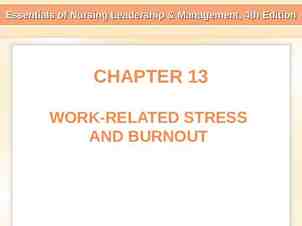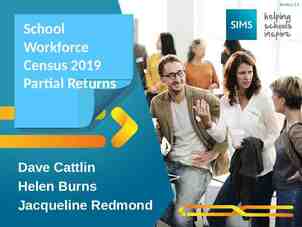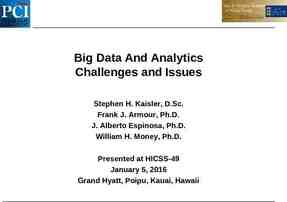RUBRIC DEVELOPMENT Why use rubrics? Characteristics of good rubrics
16 Slides182.24 KB

RUBRIC DEVELOPMENT Why use rubrics? Characteristics of good rubrics Defi nition & types of rubric Strategies for rubric development SOLO taxonomy Phenomeno graphic sorting Using rubrics with students

SCORING RUBRIC Defi nition A scoring tool that lays out the specifi c expectations for an assessment task (Stevens & Levi, 2005) A set of clear explanations or criteria used to help teachers and students focus on what is valued in a subject, topic, or activity (Russell, & Airasian, 2012). Components of a rubric: Criteria/Indicator aspects of an assessment task which the assessor takes into account when making their judgment May use diff erent weightings for diff erent criteria Level of Attainment often use grade level descriptors Types of rubrics: Descriptive (Analytic), Holistic Why and when we use particular types of rubrics

WHY USE RUBRICS? For teachers: For students: Prompt a criterionreferenced assessment Provide students with detailed and timely feedback Encourage critical thinking Facilitate communication with others involved in scoring Help to refine teaching skills/learning activities Clarify the teacher’s expectations of student performance Provide informative descriptions of expected performance Help to monitor and critique own work

CHARACTERISTICS OF GOOD RUBRICS (1) Well defi ned Clearly describe the expected level of student performance for each criterion in a rubric Avoid general evaluative words (poor, excellent, etc.) Use specific objective terms (correctly identifies, uses only basic vocabulary, chooses incorrect formula ) Context specifi c Describe what teachers expect from student for a given performance or work product on a particular subject domain Viable for instruction

CHARACTERISTICS OF GOOD RUBRICS (2) Finite and exhaustive Every response must be scorable Too many score levels is confusing for students and causes disagreement among teacher scores Ordered Represent the different levels of learning targets as defined by LP Related to Common Core theme/strand Coherent with the cognitive complexity of the standards

ANALYTIC (DESCRIPTIVE) RUBRICS Components: (1) Task description (2) Assessment criteria (3) Performance levels Advantage: Provides judgment on each criterion Disadvantage: Time consuming to make Task Description: Criteria 1 Level 5 Level 4 Level 3 Level 2 Level 1 Criteria 2 Criteria 3 Criteria 4 Total

HOLISTIC RUBRICS A single scale with all criteria to be included in the evaluation being considered together Based on an overall judgment of student work Advantage: Saves time in developing and scoring Disadvantage: Does not provide specifi c feedback for improvement Task Description: Criteria Level 5 Overall description of Level 5 Level 4 Overall description of Level 4 Level 3 Overall description of Level 3 Level 2 Overall description of Level 2 Level 1 Overall description of Level 1

WHEN TO USE RUBRICS On performance-based tasks: extended response items projects presentations portfolios

4 KEY STAGES IN CREATING RUBRICS Refl ecting on the task & content Learning outcomes of the unit and the particular assessment What we want from the students, why we created this assessment, what our expectations are Listing the learning outcomes & expectations Focus on the particular details of the task and what specifi c learning objectives we expect to see in the completed task Grouping & labeling the outcomes & criteria Organize the results of refl ections, group similar expectations together to become the rubric Indicators Application of a rubric format Apply the templates & descriptions to the fi nal form of the rubrics

STRATEGIES FOR RUBRIC DEVELOPMENT Relationship between the intended Learning Progression (LP) and rubrics Direct use of the LP as standard reference Use of a general strategy (i.e. modifi ed Bloom’s taxonomy or SOLO taxonomy) Assign the target outcome as mapped onto the Cognitive Rigor Matrix as the maximum level of the rubric Use the SOLO taxonomy as scoring Phenomenographic sorting

SOLO TAXONOMY A possible value of 0 – 4 can be used to score each question Possibl e Score 4 3 2 1 0 Level Responses that Extended not only include all relevant pieces of information, but also extend the response to integrate relevant pieces of information not in the stimulus. Relational integrate all relevant pieces of information from the stimulus. Multistructural respond to several relevant pieces of information from the stimulus. Unistructural respond to only one relevant piece of information from the stimulus. Pre-structural consist only of irrelevant information. * Modified from Wilson (2005, p. 75)

PHENOMENOGRAPHIC SORTING 1. Sort student responses into performance level piles (excellent, good, , and poor), or in terms of the levels of understanding of the responses 2. Describe similarities within a pile and diff erences between These similarities and diff erences can inform the diff erent level of rubrics 3. Do sorting in pairs To reconfirm matches & mismatches Allow dialogue to maximize the eff ectiveness of rubric development

USING RUBRICS WITH STUDENTS Explain what the test will emphasize Emphasis and expectations will be delineated in the assessment criteria in the rubrics Inform students how the assessment will be scored Explain what each of the assessment criteria defined in the rubrics means Explain how the results will be used Explain the importance of the test scores in the student’s learning progression

HOW TO USE RUBRICS WITH STUDENTS Make sure that the wording of the rubrics is understandable to students (simplify wording for lower grades). Works best with holistic rubrics (or with a combined version of analytic descriptions). Provide rubrics to students in advance of the administration of the assessment. Alternatively, students can be provided with a general rubric and a small number of papers (names removed). Students can score the papers in small groups; groups are required to come to consensus on the grade to be assigned.

BIBLIOGRAPHY N i t ko , A. J . , & B ro o k h a r t , S . ( 2 0 0 7 ) . E d u c a t i o n a l as s e s s m e n t o f s t u d e n t s . U p p e r S a d d l e R i v e r , N J : Pe a r s o n E d u c a t i o n , I n c . M c M i l l a n , J . H. ( 2 0 0 7 ) . C l a s s r o o m a s s e s s m e n t . P r i n c i p l e s a n d p r a c t i c e f o r e ff e c t i v e s t a n d a r d - b a s e d i n s t r u c t i o n ( 4 t h e d . ) . B o s to n : Pe a r s o n - A l l y n & Bacon. O re g o n D e p a r t m e n t o f E d u c at i o n . ( 2 0 1 4 , J u n e ) . A s s e s s m e n t g u i d an c e . Po p h a m, W. J . ( 2 0 1 4 ) . C r i t e r i o n - re f e re n c e d m e a s u re m e n t : A h al f- c e n t u r y w a s t e d ? Pa p e r p re s e n t e d a t t h e A n n u a l M e e t i n g o f N a t i o n a l C o u n c i l o n M e a s u re m e n t i n E d u c a t i o n , P h i l a d e p h i a, PA. Po p h a m, W. J . ( 2 0 1 4 ) . C l a s s r o o m as s e s s m e n t : W h a t t e a c h e r s n e e d s to k n o w . S an Fr a n c i s c o , C A: Pe a r s o n Ru s s e l l , M . K . , & A i r a s i a n , P. W. ( 2 0 1 2 ) . C l a s s r o o m a s s e s s m e n t: C o n c e p t s a n d a p p l i c a t i o n s . N e w Yo r k , N Y: Mc G r a w - H i l l . S te v e n s , D . & Le v i , A. ( 2 0 0 5 ) . I n t r o d u c t i o n t o r u b r i c s . A s a s s e s s m e n t t o o l t o s a v e g r a d i n g t i m e , c o n v e y e ff e c t i v e f e e d b a c k , a n d p r o m o t e s t u d e n t l e ar n i n g . S te r l i n g : S t y l u s Pu b l i s h i n g , L L C Wi h a rd i n i , D . ( 2 0 1 0 ) . A s s e s s m e n t d e v e l o p m e n t I I . U n p u b l i s h e d m a n u s c r i p t . Re s e a rc h a n d D e v e l o p m e n t D e p a r t m e n t , B i n u s B u s i n e s s S c h o o l , J a ka r t a , Indonesia. Wi l s o n , M . ( 2 0 0 5 ) . C o n s t r u c t i n g m e a s u re s : A n i t e m re s p o n s e m o d e l i n g a p p ro a c h . M a h w a h , N J : L a w re n c e E r l b a u m A s s o c i a t e s .

CREATIVE COMMONS LICENSE Ru b r i c s P P T b y t h e O re g o n D e p a r t m e n t o f E d u c a t i o n a n d B e r ke l e y E v a l u a t i o n a n d A s s e s s m e n t Re s e a rc h C e n t e r i s l i c e n s e d u n d e r a C C BY 4 . 0. Yo u a r e f r e e t o : Sha re — cop y an d red ist rib u te th e ma te rial in any med iu m o r forma t Adapt — remix, transform, and build upon the material Under the following terms: A t t r i b u t i o n — Yo u m u s t g i v e a p p r o p r i a t e c r e d i t, p r o v i d e a l i n k t o t h e l i c e n s e , a n d i n d i c a t e i f c h a n g e s w e r e m a d e. Yo u m a y d o s o i n a n y r e a s o n a b l e m a n n e r , b u t n o t i n a n y w a y that suggests the licensor endorses you or your use. N o n C o m m e r c i a l — Yo u m a y n o t u s e t h e m a t e r i a l f o r c o m m e r c i a l p u r p o s e s. Sha reAlike — If you rem ix, tran sfo rm, or b uild u p on th e m at erial, yo u m ust distribu te you r contributions under the same license as the original. Oregon Department of Education welcomes editing of these resources and would g r e a t l y a p p r e c i a t e b e i n g a b l e t o l e a r n f r o m t h e c h a n g e s m a d e . To s h a r e a n e d i t e d version of this resource, please contact Cristen McLean, c r i s t e n . m c l e a n @ s t a t e . o r. u s.






